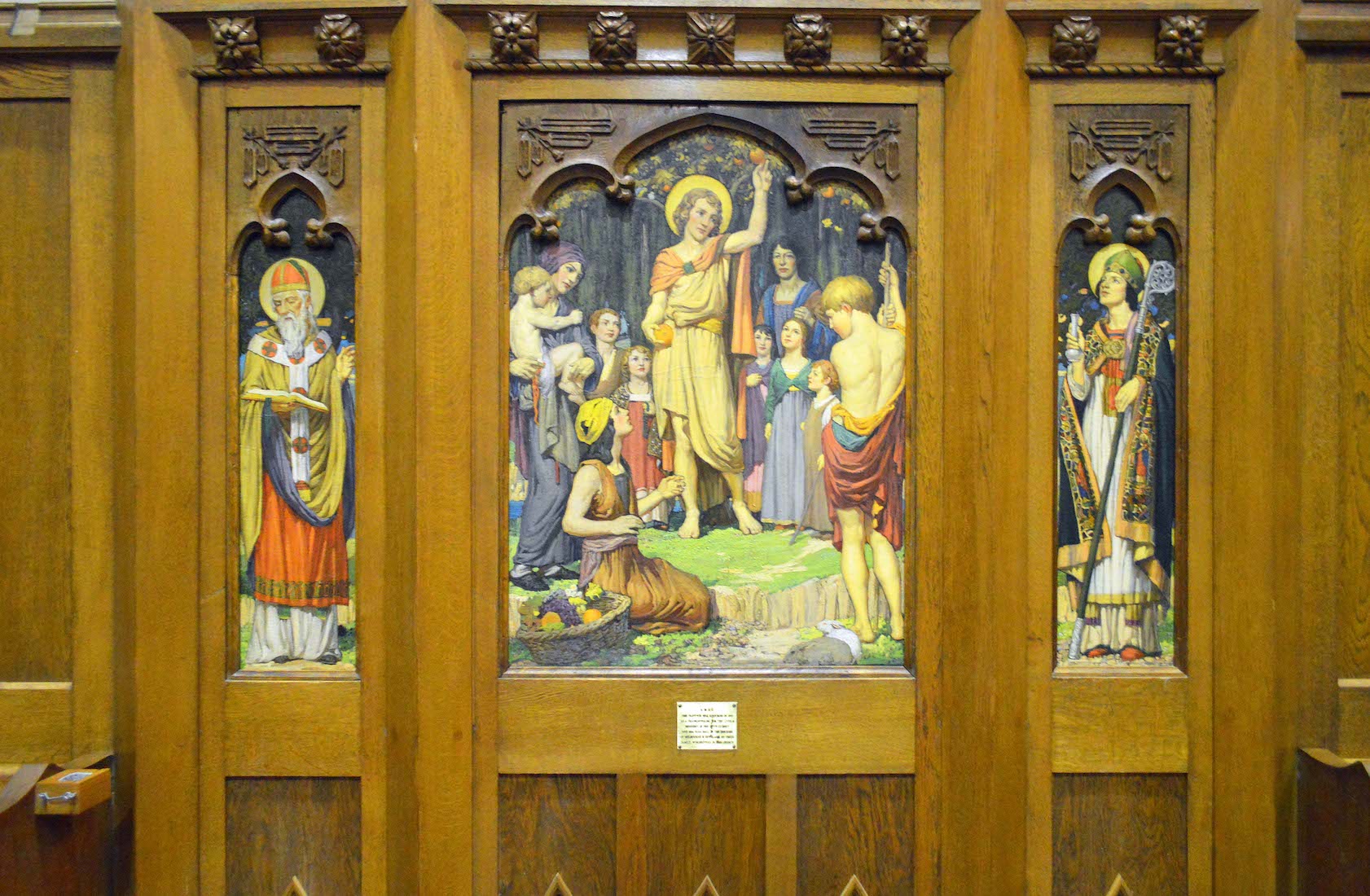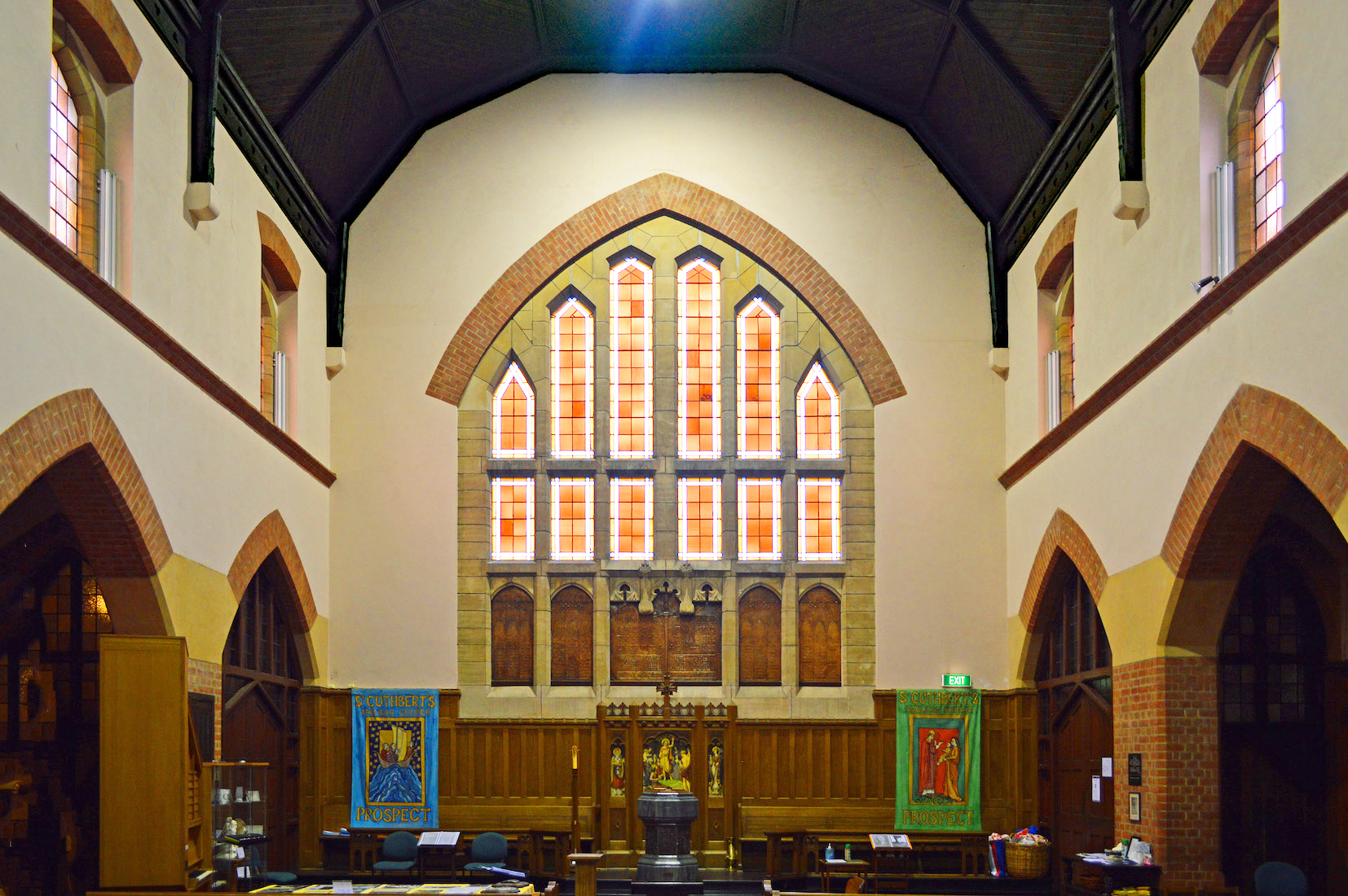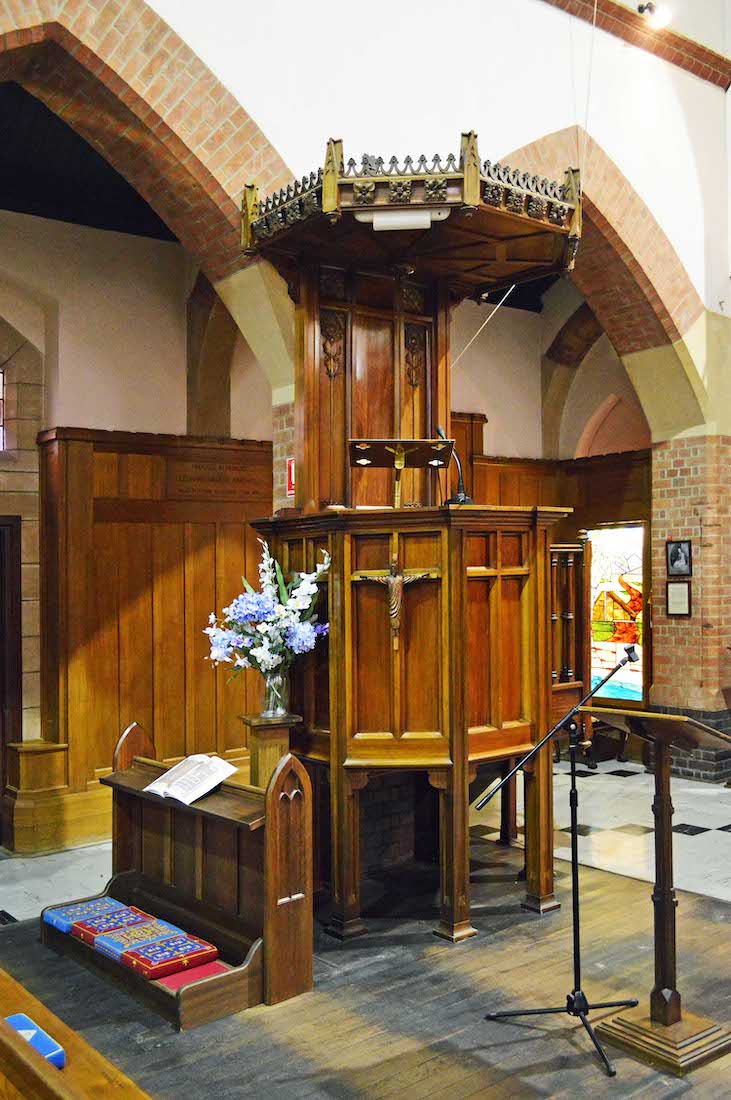
There are 161 names listed in the War Memorial. Details of two of these are shown in this open book. INDEX
22. CANDLE, FONT, EWER

Standing just in front of the West wall at centre is a baptismal font, a Paschal candle and a brass ewer. The Paschal candle is lit at Easter and on special occasions. It is a reminder that Jesus is the Light of the World.
23. FONT AND EWER
Around the top of the smart marble font are the words of Jesus: ‘Suffer little children to come unto me’. The Church regards baptism as a sign of entry to the the Christian life and into the Church.
24. PAINTED TRIPTYCH
Behind the font is a painted triptych by artist Mervyn Napier Waller. Waller was a right-handed artist who lost his right arm while serving in the Great War, but then learned to paint with his left hand.
25. TRIPTYCH DETAILS
Various details about the triptych and the artist can be found here, but unfortunately, exactly what is being portrayed is not revealed.
26. TO THE SOUTH SIDE
We leave the West wall and turn to the South side of the nave. Here there is a small organ and a display stand. On the wall behind the display stand is an honour roll.
27. ORGAN AND STATUE
The organ is a simple instrument with a single manual. On the display stand we find a statue of St Christopher from the recently decommissioned St Christopher’s Church at Kilburn. According to legend, Saint Christopher devoted his life to carrying the weak and poor across a river. One night, when he was carrying a child, he felt his burden grow heavier with each step. When questioned, the child declared that he was Christ and that Christopher was thus bearing the weight of the world.
28. OLD PHOTOS
These two historic photos are on the display stand. The top photo, taken in 1887, is of the original St Cuthbert’s Church which was built in 1883. The photo below is of the present Lady Chapel taken in 1916.
29. HONOUR ROLL
The Honour Roll behind the display stand commemorates those members of this parish who served in WWII.
30. VIEW TO THE WEST WALL
As we make our way back to the front of the Church, we look back at the impressive West wall
32. PULPIT
The canopied pulpit has a crucifix attached to the front. In behind the pulpit we can see the lighted window at the East end of the North aisle. But first, the illuminated text ...
33. ILLUMINATED TEXT
My best guess for this mysterious page is that it is a page of the Lindisfarne Gospels, and at right the text ‘Izbriu grit cratuerbum guerbumerat abudomgos’ is the first line of the Gospel of John: ‘In the beginning was the word ... ’.
34. WINDOW WITH CROSS
Spotted behind the pulpit, and at the East end of the North aisle we find this devotional niche, including a stained glass window and a Cross of Sacrifice, which commemorates Lilla Lashmar, one of the 12 New Guinea Martyrs, an Anglican missionary who was beheaded by the Japanese on 4 September 1941. Miss Lilla Lashmar, was a South Australian woman who, before becoming a missionary in New Guinea, lived just around the corner from St Cuthbert’s. Lashmar had been with the Australian Board of Inland Missions in New Guinea for several years before her death.
35. ST CUTHBERT ICON
Icons are most commonly found in Orthodox churches. They are not simply artworks: an icon is a sacred image used in religious devotion.
36. RETABLE
The retable is a small table on which items can be placed, particularly during the celebration of the Eucharist.
37. NAVE ALTAR
In the centre is the nave altar. In the 1960s there was a move, led by the Vatican, to use the nave altar instead of the high altar. This was because it was closer to the congregation, with the priest facing the people. So on Sundays the Eucharist is administered from here. The altar frontal with the crown and sword emblems is interesting.
38. CHALICE AND MISSAL STAND
These two items stand on the nave altar ...
39. ROOD SCREEN
Unusually, St Cuthbert’s has a rood screen – a common feature in medieval architecture. Its original intent was to separate off the ‘holy of holies’, but the move to serving the Eucharist from the nave altar seems to have defeated this purpose.
40. ROOD CROSS
On top of the screen is mounted the rood cross. ‘Rood’ is an archaic word for pole or cross, and was originally the only word used for the instrument of Jesus Christ’s death. The rood cross is usually a crucifix.



























